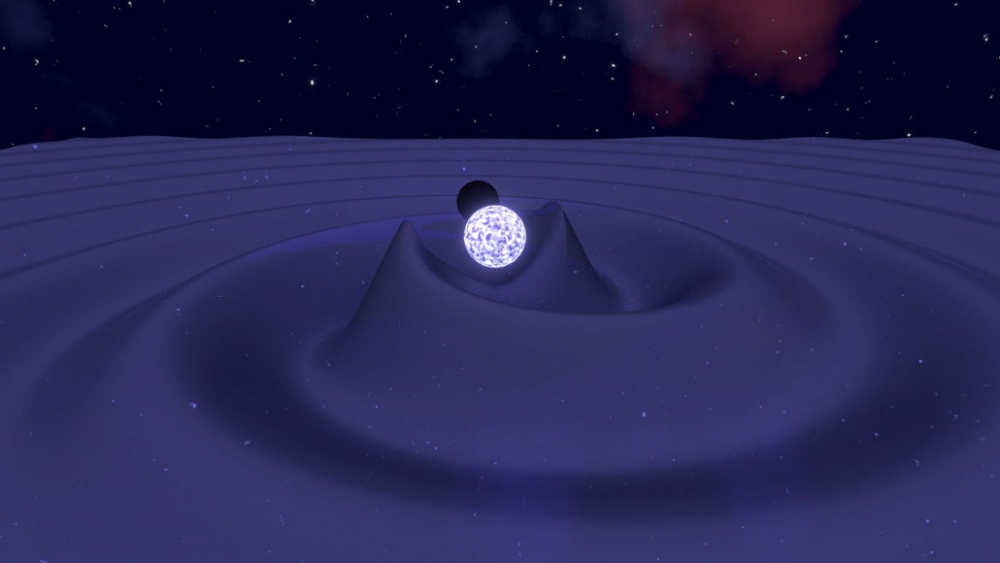Gravitational waves reveal the first known mergers of a black hole and neutron star

A black hole (illustrated in black) and a neutron star (white) spiral inward before merging, producing ripples in spacetime (dark gray). MARK MYERS/OZGRAV/SWINBURNE UNIVERSITY
An elusive source of ripples in spacetime has finally been found
By Emily Conover JUNE 29, 2021
Caught in a fatal inward spiral, a neutron star met its end when a black hole swallowed it whole. Gravitational ripples from that collision spread outward through the cosmos, eventually reaching Earth. The detection of those waves marks the first reported sighting of a black hole engulfing the dense remnant of dead star. And in a surprise twist, scientists spotted a second such merger just days after the first.
Until now, all identified sources of gravitational waves were twos of a kind: either two black holes or two neutron stars, spiraling around one another before colliding and coalescing (SN: 1/21/21). The violent cosmic collisions create waves that stretch and squeeze the fabric of spacetime, undulations that can be sussed out by sensitive detectors.
The mismatched pairing of a black hole and neutron star was the final type of merger that scientists expected to find with current gravitational wave observatories. By pure coincidence, researchers spotted two of these events within 10 days of one another, the LIGO, Virgo and KAGRA collaborations report in the July 1 Astrophysical Journal Letters.